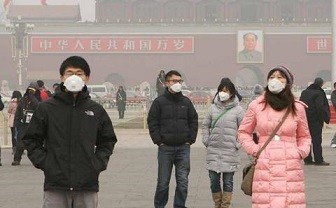Analysts are predicting that Beijing's population growth rate will slow down as the Beijing-Tianjin-Hebei Coordinated Development Program (CDP) moves forward, with the relocation of labor-intensive industries to neighboring areas an integral part of the program.
According to the details of the CDP reported by the Xinhua News Agency on Aug. 23, Beijing will be positioned as the "national center of politics, culture, international exchange and technological innovation."
The permanent population of Beijing was 21.5 million as of Dec. 2014, with a 1.7-percent growth rate, the lowest recorded since 2011, according to the National Bureau of Statistics and the Beijing Municipal Bureau of Statistics.
Beijing's permanent population includes non-Chinese citizens and people whose household registration is outside the capital. The latter group accounted for 38 percent of the city's population in 2014.
Permanent population refers to the number of people living in a particular area for over six months of a year.
Experts have attributed the slowdown of the growth rate to tightened residency policies, industrial changes and perception that overcrowded cities like Beijing as less livable.
The idea behind the Beijing-Tianjin-Hebei CDP is to relocate the nonessential functions currently in Beijing to adjust the regional economy, cultivate new growth sectors, and tackle problems like overpopulation, lack of resources and pollution.
Under the CDP, Beijing would no longer be China's center of healthcare and education, with these two industries already partially transferred to neighboring areas. Related industries will gradually follow.
However, according to Niu Fengrui, an expert on city planning and development at the Chinese Academy of Social Sciences, how successful the CDP will be is not just a matter of what Beijing can afford to export, but also what Tianjin and Hebei can afford to take in.
With one of the medium-term targets of the CDP being the target population of 23 million by 2020, the slowdown in the growth rate is expected.
Beijing will see a noticeable decrease in migrants and is likely to suffer labor shortages, said Deputy Head of the Beijing Population Research Institute Yin Deting.
The number of people moving to Beijing from 2011 to 2014 was 374,000, 300,000, 300,000 and 160,000, respectively.
With development in western and central China improving due to political support, many workers are considering staying in their hometown or migrating to a less populous area, rather than going to Beijing, a city associated with heavy traffic, pollution and high house prices.




























